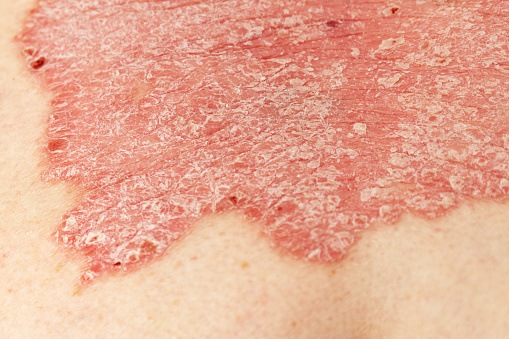
Pediatric psoriasis patients have a higher risk of other comorbidities—including psychiatric disorders—than their healthy peers, according to recent research.
Prevalence of Pediatric Psoriasis
“Pediatric psoriasis is a chronic, inflammatory, autoimmune disease characterized by plaques on the skin. Prevalence estimates of pediatric psoriasis (hereafter referred to as ‘psoriasis’) in the United States range from 0.1% to 1.3%,1 with rate increasing linearly with age,” wrote the researchers in their study, published in Pediatric Dermatology. “While psoriasis has been observed as early as 2.1 months, prevalence rises from 0.1% to 0.5% before puberty to 0.6% to 1.3% after.”
Data regarding comorbidities in young psoriasis patients are limited. A study conducted in Germany associated the disease with greater odds of hyperlipidemia, obesity, hypertension, diabetes mellitus, rheumatoid arthritis, and Crohn’s disease; U.S. and Danish studies found that pediatric psoriasis patients are more likely to have psychiatric disorders such as anxiety, depression, and bipolar disorder than their peers, and they are more likely to be taking medication for these disorders.
For the present study, researchers queried the MarketScan Commercial Claims and Encounters Database for data spanning Jan. 1, 2009, through June 30, 2015, on patients aged between four and 17 years. Patient data were stratified into two groups: psoriasis (defined as a confirmed disease diagnosis with one or two outpatient claims with an International Classification of Diseases, Ninth Revision, Clinical Modification [ICD‐9‐CM] code of 696.1) or nonpsoriasis (defined as one inpatient or two outpatient medical encounters with no diagnosis of psoriasis or psoriatic arthritis). The nonpsoriasis patients were matched 3:1 to the psoriasis group based on age, sex, and index month and year (the index date was defined as the earliest of the inpatient claims or the latter of the outpatient claims).
Comorbidities Differ Between Groups, More Prevalent in Psoriasis Patients
Of the 38,430 patients included in the study, 7,686 had psoriasis, and 30,744 did not. In both cohorts, the mean age at index date was 12.9 years, and both groups were 56.4% female. Most psoriasis patients were diagnosed by a dermatologist (65.4%).
“The prevalence (95% CI) per 1000 patients of any comorbidity was 49.05 (44.22‐54.26) in the psoriasis cohort and 11.94 (10.75‐13.22) in the nonpsoriasis cohort,” the researchers observed. Comorbidities differed between the group: for the psoriasis patients, prevalence rates were highest for Crohn’s disease (11.19 [8.95‐13.82]) and psoriatic arthritis (11.19 [8.95‐13.82]), while nonpsoriasis patients were most likely to present with diabetes mellitus (4.46 [3.74‐5.27]) and serious infections (2.99 [2.41‐3.67]).
Psoriasis patients were also significantly more likely to be obese compared to nonpsoriasis patients (7.03 [5.28-9.17] vs. 2.15 [1.66-2.73]).
Overall, the psoriasis cohort had a greater prevalence of any psychiatric comorbidity than the nonpsoriasis group (22.64 [19.40-26.26] vs. 13.40 [12.14-14.76]). When looking at specific conditions, depression was the most prevalent in both groups, although the psoriasis group had a higher rate than the nonpsoriasis group (16.91 [14.13-20.08] vs. 10.18 [9.08-11.37]). All other observed psychiatric comorbidities occurred at a higher rate among psoriasis patients as well: bipolar disorder (4.94 [3.50-6.79] vs. 2.60 [2.06-3.24]), anxiety (4.55 [3.17-6.33] vs. 1.76 [1.32-2.29]), suicidal ideation (2.34 [1.39-3.70] vs. 1.63 [1.21-2.14]), and substance abuse (0.78 [0.29-1.70] vs. 0.26 [0.11-0.51]).
“In conclusion, this descriptive study offers more insight, based on a very large sample size, of the association between psoriasis and comorbidities in pediatric patients,” the study authors wrote, adding, “Future queries of databases where disease activity measures are captured would be useful in addressing differences in comorbidities between mild vs moderate‐to‐severe psoriasis, particularly as it relates to obesity and other components of the metabolic syndrome (ie, cardiovascular disease risk factors). Exploration of comorbidities in patients stratified by therapy as well as the dose–response relationship between psoriasis severity and obesity is also needed.”







 © 2025 Mashup Media, LLC, a Formedics Property. All Rights Reserved.
© 2025 Mashup Media, LLC, a Formedics Property. All Rights Reserved.